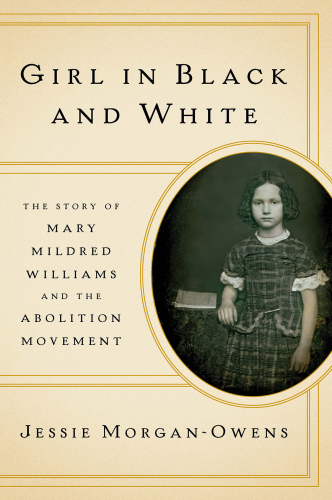
Girl in Black and White
The Story of Mary Mildred Williams and the Abolition Movement
کتاب های مرتبط
- اطلاعات
- نقد و بررسی
- دیدگاه کاربران
نقد و بررسی

February 1, 2019
In this captivating book, Morgan-Owens (dean of studies, Bard Early Coll.) begins with Massachusetts senator Charles Sumner informing his Boston constituency about Mary Mildred Botts Williams, allowing that the seven-year-old former slave who looked "white" would be a guest on his antislavery circuit in April 1855. Sumner commissioned a daguerreotype of Mary to undermine his contemporaries' belief that they could see race and also to threaten the structure of the South's slave system. The author's commanding research relates how the senator and lawyer John Andrew copied and distributed Mary's likeness among state legislators, bookstores, and stationery shops in Boston. Morgan-Owens also includes background on how Mary's father, Seth, escaped servitude and purchased his entire family's liberty, along with efforts from antislavery figures such as Thomas Wentworth Higginson, Frederick Douglass, and Henry Wadsworth Longfellow to organize on Mary's behalf. Mary later earned her independence and escaped Jim Crow by securing a government clerkship and living with her partner in the Beacon Hill neighborhood of Boston. VERDICT A powerful salute to the memory of Mary Williams, antebellum America's demure symbol of human freedom. Highly recommended for U.S. middle period, African American historians, young adults, and all readers.--John Carver Edwards, formerly with Univ. of Georgia Libs.
Copyright 2019 Library Journal, LLC Used with permission.

February 1, 2019
An earnest account of abolitionism's forgotten "poster child."In 1855, when she was only 7 years old, Mary Mildred Williams experienced two life-altering events: Her family was freed from slavery, and her photograph was taken for the abolitionist cause. The resulting daguerreotype, circulated widely by white anti-slavery leaders, depicted a light-skinned child whose features were deemed "indisputab[ly] white" by the press. Billed as a "white slave," Williams was eagerly exhibited by Charles Sumner, an abolitionist senator, to sold-out audiences, making her a living prop on the main stage of the anti-slavery movement. Rhetoric used by such leaders succeeded in igniting white American sympathy, a "selective solidarity" that was otherwise uninspired by dark-skinned black people's well-documented traumas. In a spirited narrative, photographer Morgan-Owens (Dean of Studies/Bard Early Coll. New Orleans) highlights Williams' trajectory into the spotlight. Along the way, the author confronts a range of often unspoken realities, including the anti-black sentiments that permeated the white abolitionist community, the rampant sexual enslavement that black women endured, and the subsequent dynamic of colorism employed in so-called progressive white America. Though the author occasionally struggles to convey the complex web of Williams' life and historical context, her passionate investigation notably uplifts Williams' true surname, rebuking the historical record for identifying Williams by the family name of her slave father's owner. Morgan-Owens ambitiously attempts "to name, and correct" the "myopic failures of white sympathy" that she documents in her book, succeeding mainly in the former. Self-aware as she strives to be, white gaze is conspicuous, from the author's overconfident fictionalizations of Williams' behaviors and emotional responses to her dramatic indictment of "us," the "future readers, who might not remember the tragedies borne." Since people of color are not likely to forget such history, perhaps Morgan-Owens is speaking to her own. Still, the book is a valuable contribution to abolitionist history.An imperfect but worthy perspective on a critical period of American history.
COPYRIGHT(2019) Kirkus Reviews, ALL RIGHTS RESERVED.

Starred review from March 1, 2019
In her first book, photographer and literature scholar Morgan-Owens uses the story of Mary Mildred Williams to offer a new perspective on the decade before the Civil War. Williams became a child celebrity in 1855 because, although she was born into slavery, she looked like a white girl. Abolitionist leaders blended her real-life story and her photograph with the plot of a novel in which a white girl was kidnapped and enslaved, creating an antislavery composite narrative for white Northern audiences who were unsympathetic to the suffering of enslaved African Americans but potentially open to a victim who resembled themselves. Deftly combining excerpts from contemporary sources with her analysis within an accessible, fast-moving narrative, Morgan-Owens focuses on this morally ambiguous abolitionist tactic and the new technology (photography) that enabled its development. Williams left little historical trace apart from her moment in the spotlight, but Morgan-Owens uses that experience and her family history to examine the race- and class-based assumptions underpinning the slave system as well as the politics of the abolitionists who embraced and spread her image. With its balance of social, political, and technological themes, this is a strong addition to American history collections.(Reprinted with permission of Booklist, copyright 2019, American Library Association.)

























دیدگاه کاربران